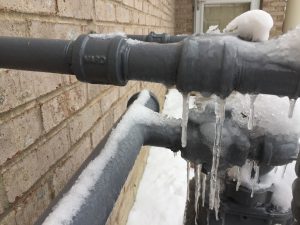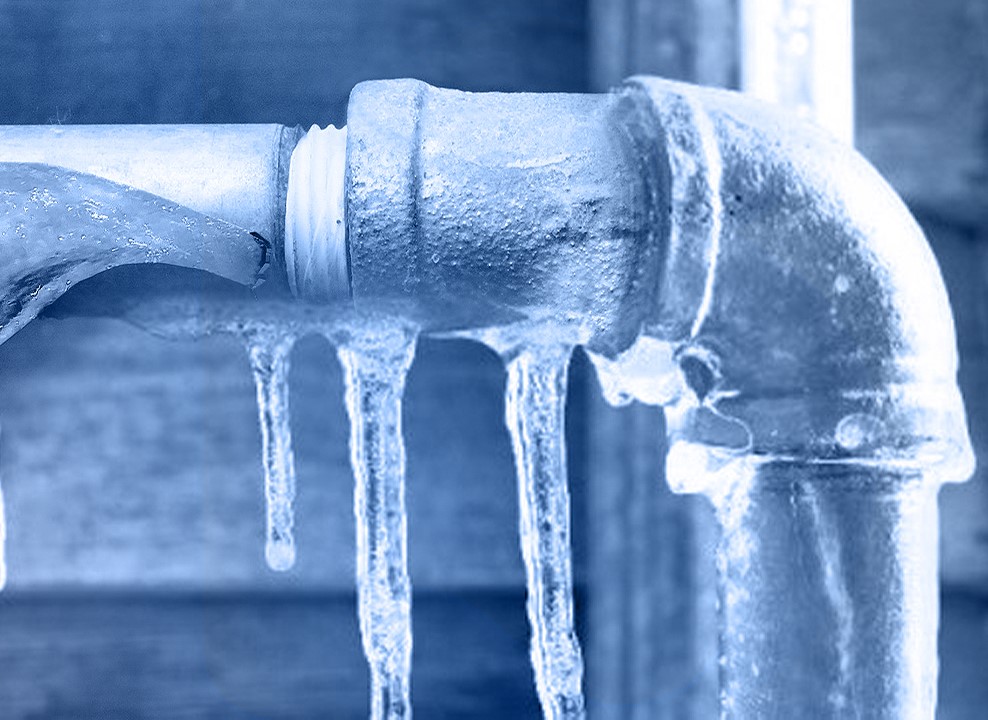Avoiding Your Pipes from Cold Weather: Top Tips
Avoiding Your Pipes from Cold Weather: Top Tips
Blog Article
We've found this post relating to Preventing and dealing with frozen pipes directly below on the web and concluded it made good sense to write about it with you on this page.

Winter can damage your plumbing, particularly by freezing pipelines. Here's how to stop it from occurring and what to do if it does.
Introduction
As temperature levels decline, the risk of icy pipelines boosts, potentially bring about pricey repair services and water damage. Comprehending exactly how to avoid icy pipelines is important for property owners in cold climates.
Avoidance Tips
Protecting prone pipes
Cover pipes in insulation sleeves or use heat tape to shield them from freezing temperature levels. Focus on pipes in unheated or external areas of the home.
Home heating strategies
Keep interior rooms sufficiently heated up, specifically locations with pipes. Open up closet doors to allow warm air to distribute around pipelines under sinks.
How to recognize icy pipelines
Try to find lowered water circulation from taps, unusual smells or sounds from pipelines, and noticeable frost on exposed pipelines.
Long-Term Solutions
Structural adjustments
Consider rerouting pipes away from exterior walls or unheated areas. Add added insulation to attic rooms, basements, and crawl spaces.
Upgrading insulation
Purchase high-grade insulation for pipelines, attic rooms, and walls. Proper insulation assists preserve regular temperatures and reduces the danger of icy pipelines.
Securing Exterior Pipes
Yard tubes and outdoor taps
Disconnect and drain yard tubes before winter season. Mount frost-proof spigots or cover outdoor taps with insulated caps.
Understanding Icy Pipelines
What causes pipes to ice up?
Pipes freeze when exposed to temperatures listed below 32 ° F (0 ° C) for expanded durations. As water inside the pipelines ices up, it expands, taxing the pipe wall surfaces and possibly causing them to rupture.
Threats and damages
Icy pipelines can cause water supply disturbances, residential property damage, and pricey fixings. Ruptured pipelines can flooding homes and cause comprehensive structural damages.
Signs of Frozen Pipeline
Recognizing icy pipelines early can prevent them from rupturing.
What to Do If Your Pipes Freeze
Immediate actions to take
If you suspect frozen pipelines, maintain faucets open up to soothe pressure as the ice thaws. Make use of a hairdryer or towels taken in hot water to thaw pipes gradually.
Conclusion
Preventing frozen pipes requires aggressive steps and quick responses. By recognizing the causes, signs, and preventive measures, property owners can protect their pipes throughout winter.
5 Ways to Prevent Frozen Pipes
Drain Outdoor Faucets and Disconnect Hoses
First, close the shut-off valve that controls the flow of water in the pipe to your outdoor faucet. Then, head outside to disconnect and drain your hose and open the outdoor faucet to allow the water to completely drain out of the line. Turn off the faucet when done. Finally, head back to the shut-off valve and drain the remaining water inside the pipe into a bucket or container. Additionally, if you have a home irrigation system, you should consider hiring an expert to clear the system of water each year.
Insulate Pipes
One of the best and most cost-effective methods for preventing frozen water pipes is to wrap your pipes with insulation. This is especially important for areas in your home that aren’t exposed to heat, such as an attic. We suggest using foam sleeves, which can typically be found at your local hardware store.
Keep Heat Running at 65
Your pipes are located inside your walls, and the temperature there is much colder than the rest of the house. To prevent your pipes from freezing, The Insurance Information Institute suggests that you keep your home heated to at least 65 degrees, even when traveling. You may want to invest in smart devices that can keep an eye on the temperature in your home while you’re away.
Leave Water Dripping
Moving water — even a small trickle — can prevent ice from forming inside your pipes. When freezing temps are imminent, start a drip of water from all faucets that serve exposed pipes. Leaving a few faucets running will also help relieve pressure inside the pipes and help prevent a rupture if the water inside freezes.
Open Cupboard Doors
Warm your kitchen and bathroom pipes by opening cupboards and vanities. You should also leave your interior doors ajar to help warm air circulate evenly throughout your home.

Do you like reading about How to Prevent Your Pipes From Freezing? Place a remark directly below. We would be pleased to listen to your responses about this blog post. We hope to see you back again in the future. Those who enjoyed our blog entry please remember to pass it around. I treasure reading our article about Preventing and dealing with frozen pipes.
Information Here Report this page